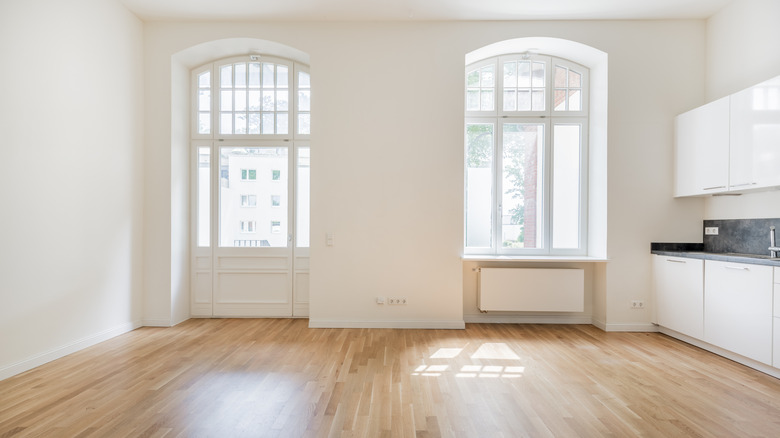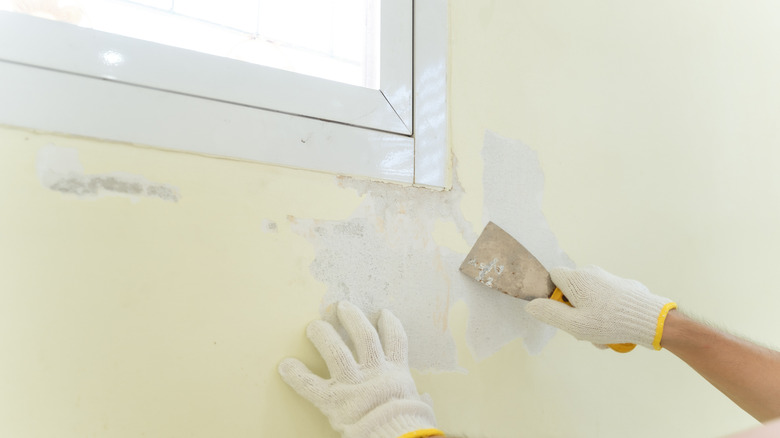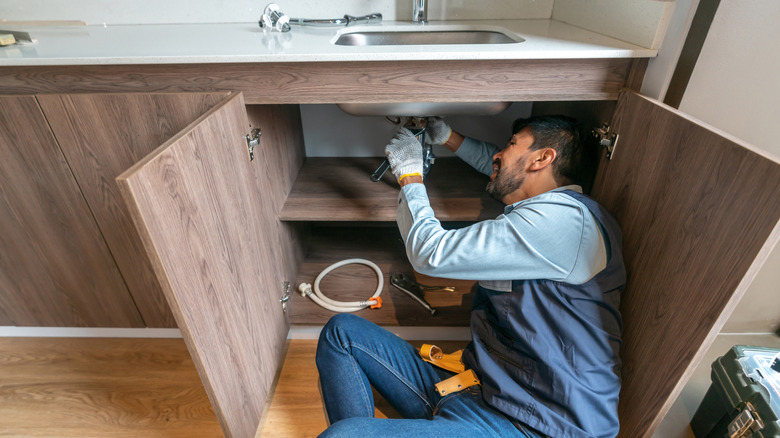Here's How To Spot Property Damage Vs Normal Wear And Tear In Rentals
When a tenant moves out, you're bound to find some cracks, holes, fading, scratches, and other marks, especially if the tenant lived in the unit for years. Assessing the situation helps you decide how much of the security deposit you should return. Each state sets regulations on security deposits, including reasons you can keep the money. In most states, you can only keep the deposit to cover damages that are beyond normal wear and tear. Identifying damage helps you determine what the renter is generally required to fix before moving out or what repairs you can charge for.
So how is property damage different from the normal wear and tear? Wear and tear includes any deterioration in the property that you would expect to happen with regular use. It's not intentional but simply the result of using the property for normal, everyday activities. You often see normal wear tear as fading, scuffs, minor scratches, dust accumulation, and natural weathering.
Damage is any deterioration or destruction that comes from activities outside of normal use. It's typically caused by neglect, carelessness, accidents, or abuse of the property. It's not always intentional. The tenant might not mean to cause the damage, but they also may neglect to take necessary precautions. Severity often separates wear from damage; a few nail holes could be considered normal, but an excessive number of nail or big screw holes and chunks of plaster missing are more likely to be considered damaged. Minor scratches on the countertop are likely caused by normal use while chips, cracks, or gouges on a similar countertop probably happened due to carelessness or misuse.
Considering the time and age factor
It's important to consider the condition of the house prior to move-in. If you invest in a rental property that's older and you don't renovate it, you might expect to see additional damage after the tenant lives there, even if they use the property normally. An old, worn tub might not hold up well, even under normal use, and could be more susceptible to cracks or chips. Holes or tears are more likely in carpet that's several years old and already worn thin. Even though those types of issues would be considered damage in a newer space, they might fall under normal wear and tear in an older home.
How long the resident lives in the rental also impacts what type of wear might be normal or abnormal. You shouldn't see much change in the condition of the property if the tenant only lives there for a few months. That's not enough time for even routine wear to show much. However, after several years of a tenant living in your home, you can expect to see more deterioration because of how long different items last. You typically need to repaint every three to five years, so you can expect the wall paint to look rough if you have a tenant in the home for eight years. Low-quality carpet usually lasts for five to eight years, so you might see worn spots, thin padding, or stains if your tenant was there for 10 years. Consider the average lifespan of different materials and appliances and how long the tenant lived there when deciding between damage and wear.
Understanding the tenant's responsibilities
Routine maintenance helps prevent some damage, such as vacuuming to reduce excessive dirt and staining in carpets. Damage resulting from a tenant's failure to maintain the space could be their responsibility. It's a good idea to list maintenance tasks your tenant needs to handle in the lease. If they never change the HVAC filter and the unit breaks, the tenant could be responsible for the repair costs, for instance.
Though neglect and abuse may cause similar results, sometimes issues beyond the tenant's control cause damage, such as plumbing leaks damaging drywall and causing mold or a hail storm shattering windows. Most leases require the tenants to report these issues to you, though, and it then becomes your responsibility to fix. If the tenant doesn't report the issue, the resulting deterioration, such as additional water damage and mold from waiting to fix a leaky pipe, could become the their responsibility.
Damages versus wear and tear are easier to spot when you specify the difference in the lease and document the property well. Taking photos before a new tenant moves in provides proof of its condition when they assumed responsibility for the property. You can refer to those photos when the tenant moves out as a reminder of the original condition. Another helpful document is a walk-through checklist. The landlord and tenant use the form to document any existing damage at the time of move-in, like cracked blinds or features on appliances that don't work. If you notice a problem when the tenant moves out, check that form to look for existing conditions that contributed to the issue.


